- Category
- Culture
All of Ukraine's Iconic UNESCO Cultural Heritage Sites You Need To Know About, and Visit One Day
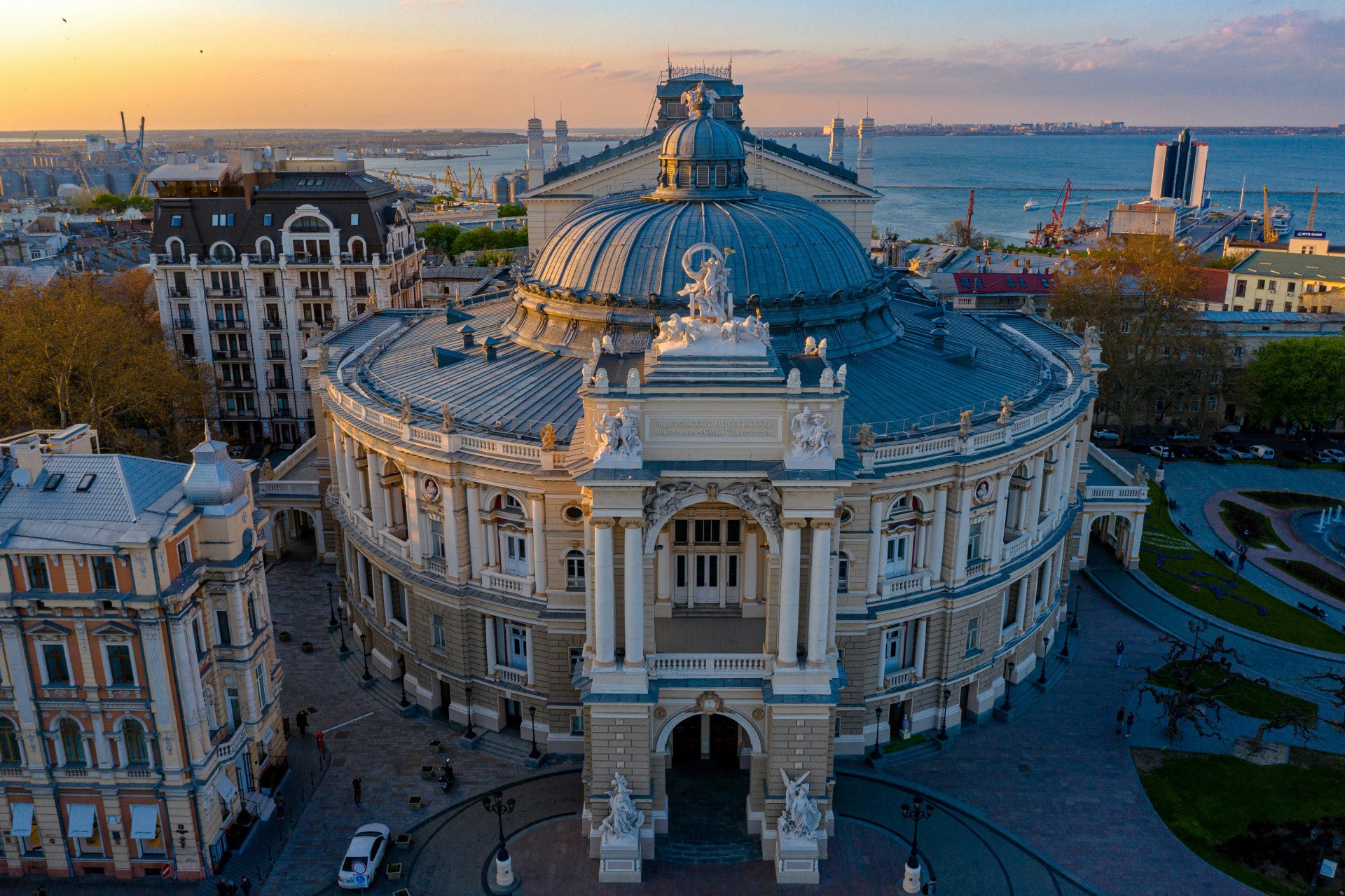
Join us as we take you through Ukraine's treasures, many of which are endangered today because of Russia’s full-scale invasion.
Welcome to Ukraine, a country that effortlessly blends the old with the new. It boasts a tapestry of UNESCO World Heritage Sites—8 in total—that testify to its enduring spirit and boundless creativity. From ancient cities to stunning cathedrals, each site narrates a story of human endeavor, perseverance, and a quest for beauty amidst the turmoil.
But here are some upsetting numbers: UNESCO has verified 345 cultural sites in Ukraine damaged by Russia since the full-scale invasion began in 2022. This includes 127 religious sites, 153 historical/artistic buildings, 31 museums, 19 monuments, 14 libraries, and one archive.
At least two of these sites are UNESCO World Heritage Sites. Another one is listed as endangered because of the ongoing Russian invasion. One of the eight has been illegally occupied since 2014.
Despite this, efforts to safeguard Ukraine’s culture continue—to ensure survival in the future. The time will come when Ukrainian victory and peace become a reality, and the country’s UNESCO cultural heritage sites will stand as beacons of hope, inviting visitors from all around the world to embark on a journey through time. For now, join us as we virtually take you through them.
1. Lviv’s historic center
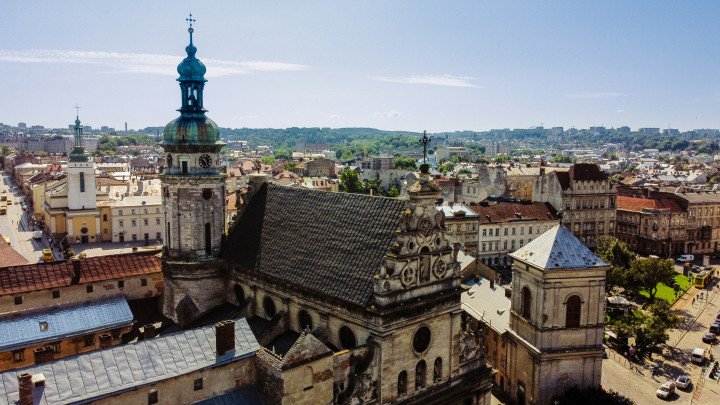
Picture yourself strolling through the cobbled streets of Lviv's historic center, where the whispers of centuries past echo in every brick and every corner. Gothic spires reach towards the skies, while Baroque facades enchant with their intricate details. Sprawling over 300 acres, the ancient heart of Lviv has had its title of a UNESCO World Heritage Site since 1998. Lviv—with its origins dating back to the late Middle Ages—continues to retain its medieval urban layout and rightfully boasts the highest concentration of architectural landmarks in Ukraine.
On July 6, 2023, Russian forces launched a missile strike on Lviv with 10 cruise missiles, which killed 10 people, injured 42, and damaged 35 buildings. Among the hardest-hit areas was Stryiska Street—a buffer zone of the UNESCO World Heritage site. One of the damaged buildings was an architectural masterpiece by Michal Ryba, comprising 17 distinct structures recognized as a local architectural treasure. Its roof was obliterated, and numerous apartments were completely demolished.
2. Residence of Bukovinian and Dalmatian Metropolitans
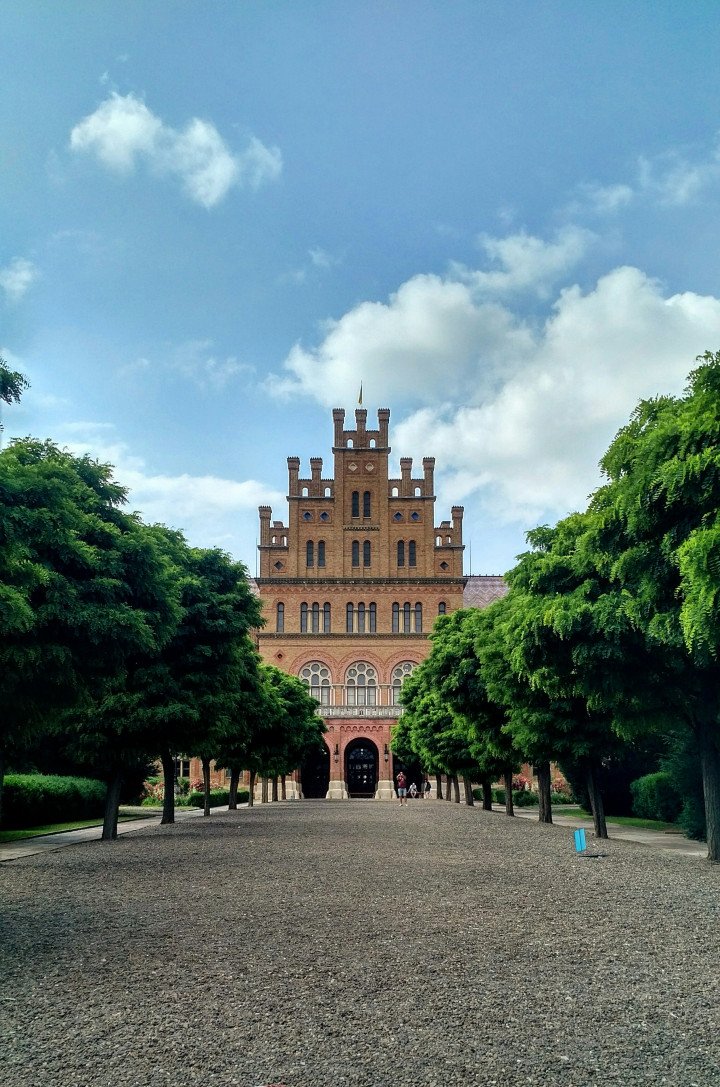
In the picturesque city of Chernivtsi lies the Residence of Bukovinian and Dalmatian Metropolitans, a hidden gem of architectural elegance and historical significance. Initially built in the 19th century for the Eastern Orthodox metropolitan bishop, the buildings are now part of Chernivtsi University. In 2011, UNESCO recognized it as having "outstanding universal value." As you stroll through the Residence's grandiose corridors and leafy courtyards, you can't help but marvel at the intricate fusion of Byzantine and Moorish styles and the inspiration by the Alhambra. With its opulent interiors and serene beauty, every corner exudes timeless elegance and refinement.
3. Kyiv’s Saint-Sophia Cathedral and related Monastic Buildings, Kyiv Pechersk Lavra
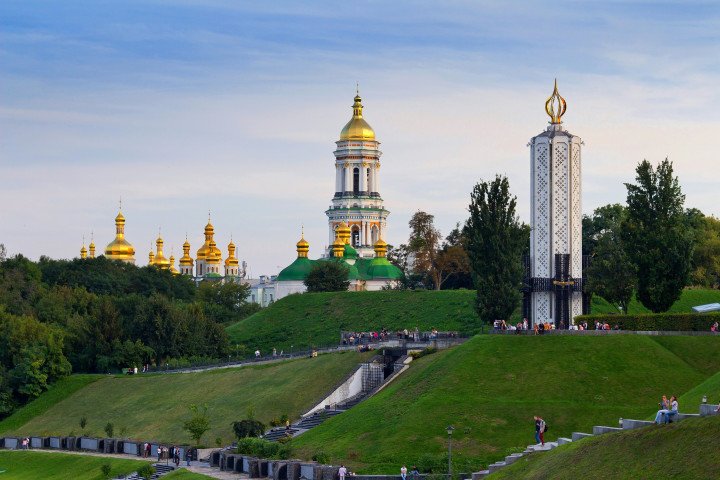
Venture further into the heart of Ukraine, and you'll discover the ancient city of Kyiv, where the past and the present intertwine. At the St. Sophia Cathedral, immerse yourself in the splendor of Byzantine artistry as golden domes sparkle in the sunlight and centuries-old mosaics come to life before your eyes. The 11th-century mosaics and frescoes are unique for their integrity as the Cathedral has preserved its ancient interiors. Nearby, the Kyiv Pechersk Lavra beckons with its mystical allure, offering a glimpse into the spiritual heritage of Ukraine through its labyrinthine caves and ornate cathedrals. The Monastery, with its relics of saints buried in caves, remains one of the world's most important Christian pilgrimage sites. UNESCO added it to its World Heritage List in 1990 as a masterpiece of human creative genius in its architectural conception and remarkable decoration.
4. Struve geodetic arc
As you journey through Ukraine's UNESCO cultural heritage, remember to visit the Struve Geodetic Arc, designated in 2005, a testament to human ingenuity and quest for knowledge. Stretching across 10 countries and spanning over 2,820 kilometers, this scientific marvel is a reminder of the power of exploration and discovery. An extraordinary example of scientific collaboration among governments and scientists from different countries, it established the exact size and shape of the Earth and it was instrumental in developing earth sciences and topographic mapping.
5. The historic city of Odesa
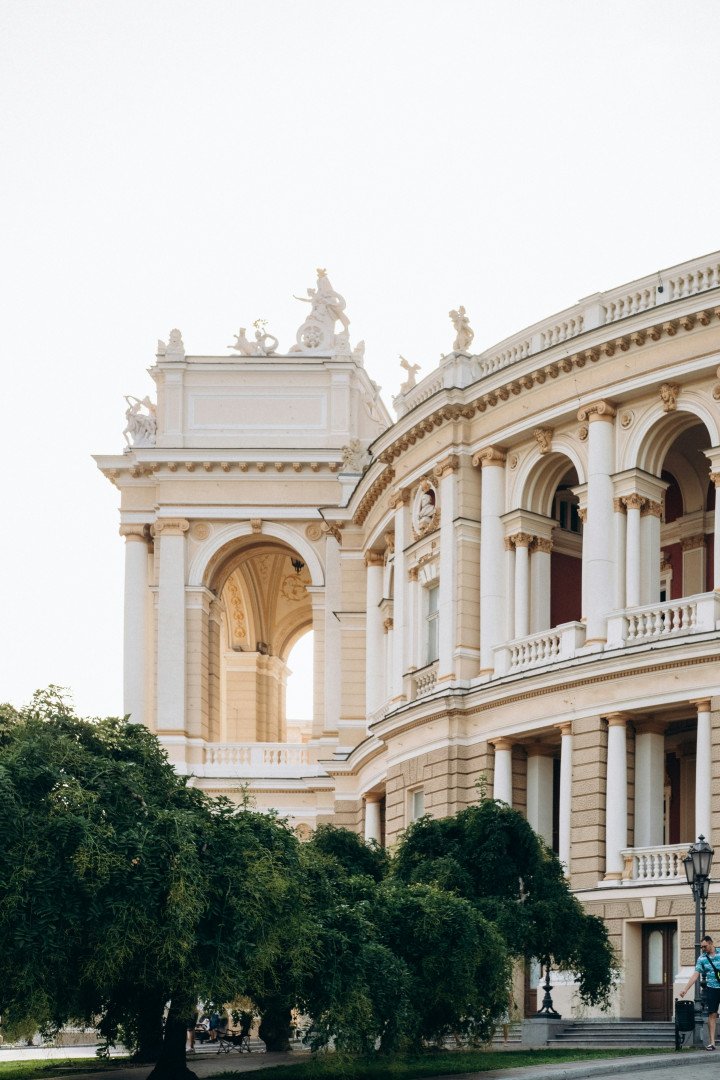
And, of course, heading south, don't forget to venture to Odesa, the historic gem of the Black Sea coast. It earned its rightful place on Ukraine's UNESCO roster in 2023. Grand boulevards and elegant buildings testify to the city's rich history. Eclecticism is the dominant feature of the historic city center's architecture. The city center's architectural tapestry is a vibrant mosaic of styles, reflecting the diverse influences of Odesa's multicultural and multiethnic populace, a hallmark of 19th-century Eastern European urban development. Odesa's cultural heritage has particularly suffered during the ongoing destructive war Russia is waging against Ukraine, with 49 damaged sites. Those include museums, churches, cathedrals, mansions, centuries-old residential buildings, and many more.
One of them was the Spaso-Preobrazhensky Cathedral on Cathedral Square which many call the heart and soul of the port city. On the night of July 23rd 2023, the Russian forces struck Odesa with 19 missiles of 5 different types. As a result of the attack, one person was killed and 22 injured. However, the attack also partially destroyed the cathedral building—the roofs of three lower floors collapsed, and the decoration was devastatingly damaged. In the wreckage, the cathedral's primary relic, the Kasparivska Icon of the Mother of God, was discovered; thankfully, it was saved. Since the mid-19th century, the icon has been revered as the protector of Odesa.
As of now, an agreement has been reached between the Italian Republic and UNESCO, concluding that Italy will contribute €500,000 towards the initial restoration efforts of the Spaso-Preobrazhensky Cathedral. The community is hopeful that the restoration will begin soon.
6. Ancient city of Tauric Chersonese and its Chora
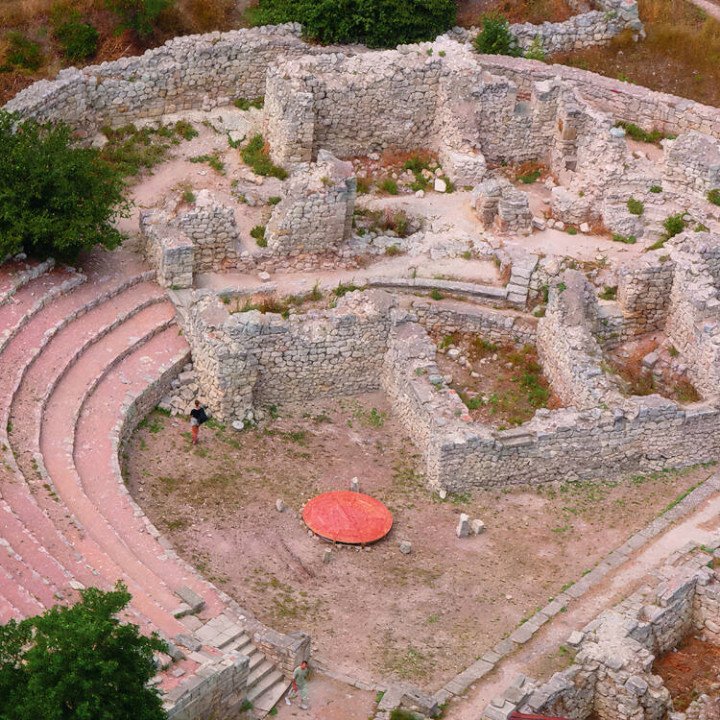
Chersonesos Tavriya, a jewel nestled in the southwestern corner of Crimea near the modern city of Sevastopol, boasts a rich and storied past. It was officially recognized as a UNESCO World Heritage Site in 2013, encompassing not only the archaeological site but also the surrounding agricultural district. This ancient Greek city-state, shrouded in captivating myths and legends, dates back to the 4th or 3rd century BC. Legend even has it that the Kyivan Prince Volodymyr the Great was baptized there.
By the time of the Russian occupation of Crimea in 2014, it housed over 200,000 artifacts discovered during excavations on the city's outskirts, constituting one of Europe's most affluent archaeological collections. In October 2015, the Russian government entered the Chersonesos Tavriya National Reserve into federal ownership, attempting to position it within Russia's cultural sphere and, well, doing what they do best—stealing. Despite UNESCO's refusal to recognize Russian jurisdiction, the authorities pursued archaeological and research activities. Disguised as modernization, a gaudy entertainment complex rose from Chersonesos' ruins. Bulldozers razed archaeological sites to make way for spectator stands, paved tracks, and a plethora of electronic and sensor devices. This crass construction served a singular purpose: promoting the fabricated myth of a "Russian cradle of Orthodoxy." Because of the ongoing occupation, the current state of the Chersonesos is unknown.
7. Wooden Tserkvas (Churches) of the Carpathian region
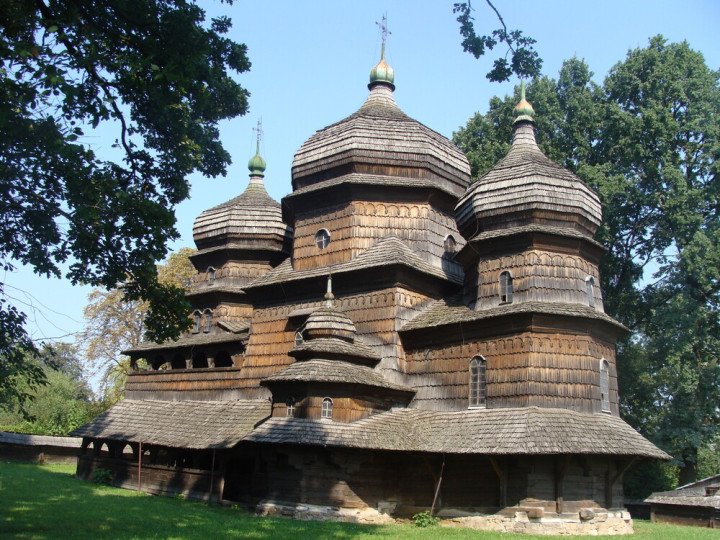
In the remote villages of the Carpathian Mountains, a hidden treasure awaits those who dare to venture off the beaten path. The Wooden Tserkvas (Churches) of the Carpathian Region, a series of intricately crafted Orthodox and Greek Catholic churches, have stood as guardians of tradition for centuries. Designated as a UNESCO World Heritage Site in 2013, these wooden marvels are not merely places of worship but living symbols of Ukraine's heritage and cultural identity. As you stand before their weathered facades and gaze up at their unique design, you can't help but be in awe at the skill and craftsmanship of the artisans who built them with nothing but their bare hands and a deep reverence for the divine.
8. Ancient and primeval beech forests of the Carpathians
Perhaps the most enchanting are the primeval beech forests of the Carpathians, Ukraine's one natural heritage site, where nature reigns supreme and time stands still. The Ukrainian Carpathians boast the last intact virgin forests out of 18 European countries where they also span. These transnational forests were first designated as a UNESCO World Heritage Site in Ukraine and Slovakia in 2007 and later expanded to include more countries. Lose yourself amid towering trees and cascading waterfalls as the symphony of the forest fills your senses and your heart with wonder. Here, surrounded by the pristine wilderness, you'll find solace amidst the chaos of life.
Hope amidst war
As you journey through Ukraine's UNESCO cultural heritage sites, you'll be captivated not only by their beauty but also by the resilience of the Ukrainian people. Despite facing so much hardship throughout history—and now in danger because of Russia’s relentless attacks—Ukraine has preserved its cultural treasures, ensuring that generations get a chance to see them, too. Wander the ancient streets of Lviv and Odesa, stand in awe before the golden domes of Kyiv, and lose yourself in the pristine beauty of the Carpathian forests. For in these places, there is hope—hope for a future where victory, justice, and peace win, and the spirit of Ukraine shines brighter than ever before.





-1e64b6336d07968ffea617de91046818.png)

-554f0711f15a880af68b2550a739eee4.jpg)